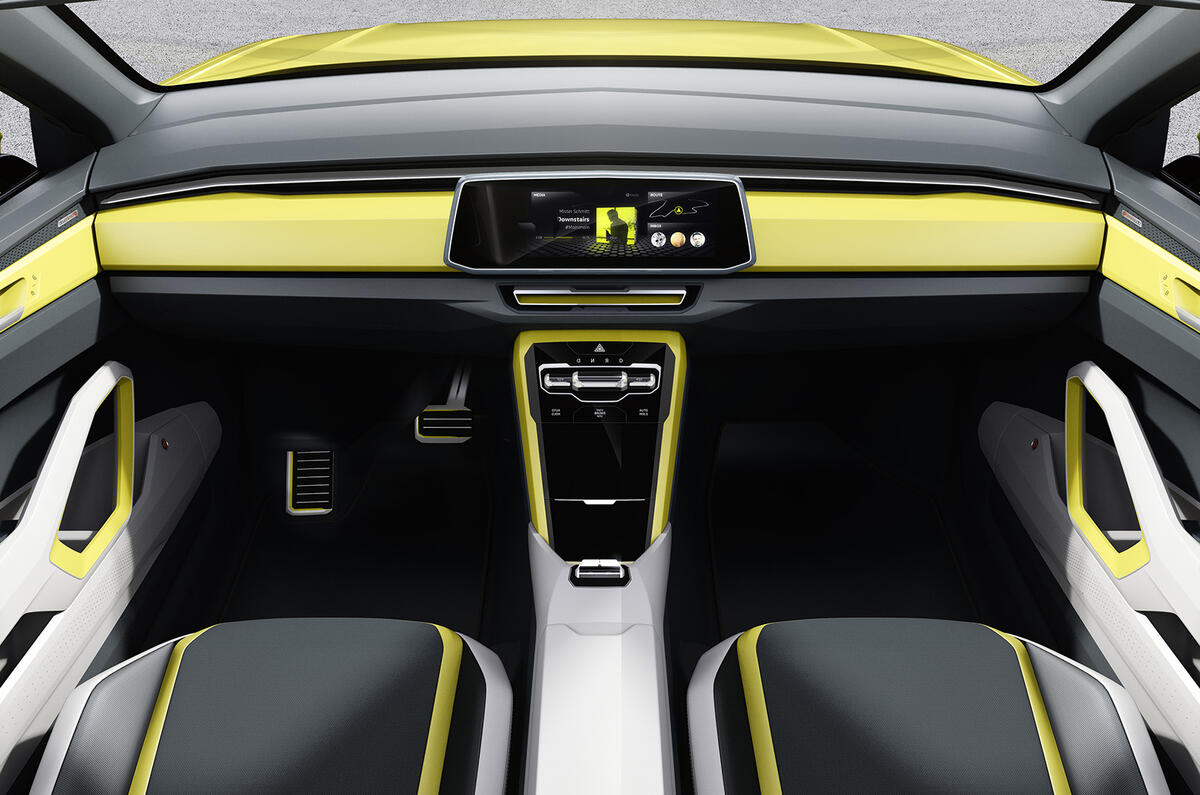Whatever the merits of VW’s futurologist Johann Jungwirth and his far-sighted predictions for mobility of the future – as laid out during last night’s Geneva motor show preview event – his arrival is coinciding with a significant behind-the-scenes design shake-up at Europe’s biggest car maker.
Speaking to new VW Group design chief Michael Mauer, it’s clear the challenge for VW is to keep its design lead – particularly in interiors – while coping with new technologies that will render cockpit dials, switches and even the steering wheel redundant.
“We will have a completely different structure to the interior of the car of the car of the future and we have to start now. This is the nature of disruptive technologies,” he says.
Jungwirth, a Silicon Valley import, is a keen supporter of the “end-of-the-steering-wheel” theme, which will completely change the architecture of the autonomous car’s interior.
“Will we need an airbag?” asks Mauer, “and if we do, where will we fit it? We just don’t know the answers to these questions yet.”
For the time being, this is still a philosophical question. The first VW Group battery-electric vehicle will be the Porsche Mission E, held up by Jungwirth at last night’s presentation as the “future of VW Group”, and Mauer is pretty sure that at launch in 2019, it will have a steering wheel.
But the speed of development of autonomous driving technologies is pushing VW to explore steering wheel-free cars for subsequent models.
No one will commit to a date, although Mauer makes an important point that China, where new cities spring-up in months, is probably the place where a brand-new, autonomous driving road network can first be set-up from scratch to support the steering wheel-free car.
VW’s onslaught of 20 new battery electric vehicles into 2020 and beyond will also spawn new interiors built around cabin-width touchscreens – a technology that suppliers are working hard to make a production reality.
Working on the graphics for these screens and how each VW Group brand delivers information through its HMI interface is the second thrust of the new Group ‘Future Design Centres’ being established in Germany, California and China to merge traditional car design expertise with the new discipline of digital design.







Join the debate
Add your comment
It took the car industry ages
Autocar wrote: “Will we need
Forgive me if I am being stupid, but doesnt nearly every car on sale today come with a passenger airbag, and last time I checked most vehicles dont have a steering wheel mounted on the passenger side to fit the said airbag in, its usually incorporated into the dashboard facia, so perhaps Herr Mauer is not the best person to be asking these questions.
However the biggest questions is, why didnt any motoring journalist raise the same point.
?
Steering wheel free